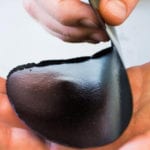 Animals
Animals  Animals
Animals  Weird Stuff
Weird Stuff 10 Weird Things People Used to Do at New Year’s
 Our World
Our World 10 Archaeological Discoveries of 2025 That Refined History
 Weird Stuff
Weird Stuff 10 Fascinating Facts You Might Not Know About Snow
 Miscellaneous
Miscellaneous Top 10 Things Crypto Was Supposed to Change & What Actually Did
 History
History 10 Huge Historical Events That Happened on Christmas Eve
 Music
Music 10 Surprising Origin Stories of Your Favorite Holiday Songs
 History
History 10 Less Than Jolly Events That Occurred on December 25
 Weird Stuff
Weird Stuff 10 Funny Ways That Researchers Overthink Christmas
 Politics
Politics 10 Political Scandals That Sent Crowds Into the Streets
 Animals
Animals 10 Species That Refused to Go Extinct
 Weird Stuff
Weird Stuff 10 Weird Things People Used to Do at New Year’s
 Our World
Our World 10 Archaeological Discoveries of 2025 That Refined History
Who's Behind Listverse?

Jamie Frater
Head Editor
Jamie founded Listverse due to an insatiable desire to share fascinating, obscure, and bizarre facts. He has been a guest speaker on numerous national radio and television stations and is a five time published author.
More About Us Weird Stuff
Weird Stuff 10 Fascinating Facts You Might Not Know About Snow
 Miscellaneous
Miscellaneous Top 10 Things Crypto Was Supposed to Change & What Actually Did
 History
History 10 Huge Historical Events That Happened on Christmas Eve
 Music
Music 10 Surprising Origin Stories of Your Favorite Holiday Songs
 History
History 10 Less Than Jolly Events That Occurred on December 25
 Weird Stuff
Weird Stuff 10 Funny Ways That Researchers Overthink Christmas
 Politics
Politics 10 Political Scandals That Sent Crowds Into the Streets
Top 10 Fascinating Facts About Toilet Paper
It may come as no surprise that toilet paper is not old, especially when comparing astounding innovations that the world has seen throughout history. The following 10 facts focus on amusing moments in time regarding the birth and the rise of toilet paper. There are also the most ridiculously bizarre occurrences pertaining to it.
10 Holiday Bonus

No one felt the impact of Russia’s struggling industries more than the factory workers in Penza, a city 550 kilometers (340 mi) southeast of Moscow. The jubilation shared among the employees at the cash-strapped clock factory abruptly ended upon receiving their bonuses—150 rolls of toilet paper.
This “generous” addition to their already dismal salaries took many workers three days to carry home. One woman even attempted to use her bonus as an unconventional means of paying rent but to no avail.
One worker, who jumped to his death from the factory rooftop, left a suicide note stating that his funeral expenses should be paid by the company director. Workers elsewhere were more fortunate, having received cucumbers, pineapples, and even brassieres. According to a survey conducted in 1998, only 18 percent of Russian workers reported being paid regularly.
9 Doctor-Recommended Toilet Paper
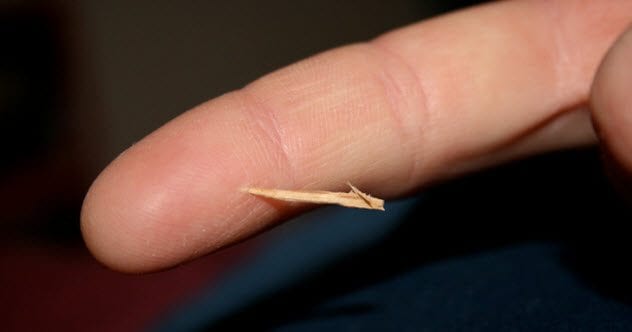
Scott Paper Company, a leading brand in the toilet paper industry, practiced one of the most effective ways to advertise their product: displaying images of consumers’ sore “bottoms” and insisting that people used the wrong toilet paper.
In 1929, the ads garnered enormous attention. They stated, “After 40 years of age, doctors say you have one chance in two of contracting some form of rectal disease. The cause: harsh or impure toilet paper.”
Although some may view this as inciting fear, perhaps the ads weren’t far from the truth. Prior to the 1930s, the manufacturing process couldn’t remove all the tiny wood slivers from toilet paper made from wood pulp. After discovering that cooking the wood pulp longer reduced the splinters to mush, Scott Paper advertised their product as “splinter-free” and assured that both doctors and plumbers recommended their toilet paper.
8 The Toilet Paper Bandit

For quite some time, Ricardo Jefferson pulled off one of the strangest and perhaps least profitable heists in US history. It all began on August 5, 1995, when an investigation was opened by City Controller Jonathan A. Saidel over missing stadium toilet paper.
While working as a store supervisor at Philadelphia’s Veterans Stadium, Jefferson reportedly “wiped the stadium clean” over a 10-month period from October 1994 to August 1995. The missing bathroom necessity was only noted prior to a Philadelphia Eagles’ preseason game when a “major shortage” left stadium officials confused and football patrons holding in their bowel movements.
Jefferson was reported to have stolen a total of $34,000 worth of toilet paper and was subsequently fired. Whether Jefferson was dealing with a bad case of irregular bowel disorder or simply lining his pockets, it is unclear what became of the missing TP.
7 Lewd And Unmentionable Product
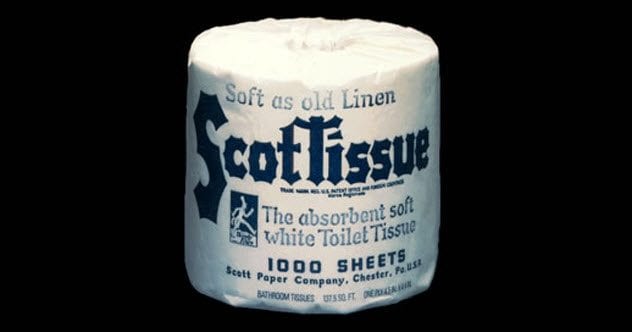
Although toilet paper was produced in China during the fourth century, it was not until 1857 that Joseph C. Gayetty introduced the first packaged “Therapeutic Paper” to the United States. Scott Paper Company saw great potential given America’s public desire for better hygiene.
So they began marketing the first rolls of toilet paper in 1890. However, the company’s success depended heavily on how to market an “unmentionable” product.
Given the country’s conservative views, Scott Paper Company did not want to soil their family name by advertising it in conjunction with a subject that was considered “lewd.” Therefore, they sold toilet paper rolls to private dealers who then rebranded the product.
This continued until 1902 when Scott Paper purchased the “Waldorf” trademark, the company’s first branded toilet paper. Public acceptance grew, and Scott Paper Company officially began including their name on the once-unmentionable product in 1903.
6 Bathroom In Space

According to the National Air and Space Museum, one of the most universal questions for astronauts is how they manage to relieve themselves in space. Many of us are not aware of the months of research and testing that go into preparing a maintenance-free bathroom facility.
Given the amount of time that astronauts train to learn how to properly sit and stay in place on a $30 million space toilet—in addition to all the intricate details—costs quickly add up.
Nothing is overlooked, even the space shuttles’ toilet paper. ISS Expedition Six Science Officer Don Pettit described the paper as being nothing that people would expect.
Pettit explained that the tissue consists of two layers of coarsely woven gauze sewn together with a layer of brown tissue sandwiched in between. Although unusual, Petit claims that the tissue works “very well for its intended purposes,” leaving little to the imagination.
5 The Tax Man

It would be reasonable to assume that basic hygiene essentials would be exempt from tax—unless you live in New York. In the Big Apple, sales tax for toilet paper is 8.875 percent, leaving many, including New York State Senator Phil Boyle, baffled. In fact, many New Yorkers are unaware of the taxation on a product that is a necessity of everyday life.
It’s not just New Yorkers, however, who are feeling the sting in their shorts. After discovering Florida’s sales tax laws, Sun Sentinel columnist Michael Mayo launched a petition pleading for legislators to exempt toilet paper from taxation.
Pennsylvania resident Mary Bach took it one step further. In 2007, she sued Kmart for charging her sales tax on toilet paper.
4 The Toilet Paper Crisis Of 1971
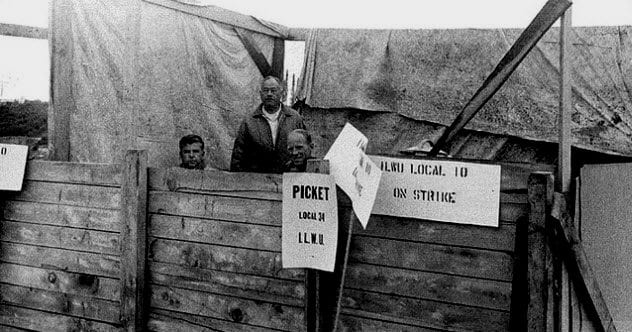
In 1971, Hawaii went into a state of panic when faced with the inescapable realization of an island without toilet paper. It all began 3,900 kilometers (2,400 mi) east when West Coast shipping workers in San Francisco went on strike, cutting off a large fleet of ships that normally supplied Hawaii with basic household necessities.
About 15,000 laborers walked off their jobs seeking higher wages, proving just how vulnerable islands can be. In fact, 90 percent of goods consumed in Hawaii are brought in by ships, making toilet paper a highly valued commodity.
The strike lasted 134 days. In February 1972, an agreement was reached when workers accepted a wage increase of 14 cents per hour. It remains uncertain what the islanders resorted to when their rolls ran out for months on end.
3 A Profitable Mistake
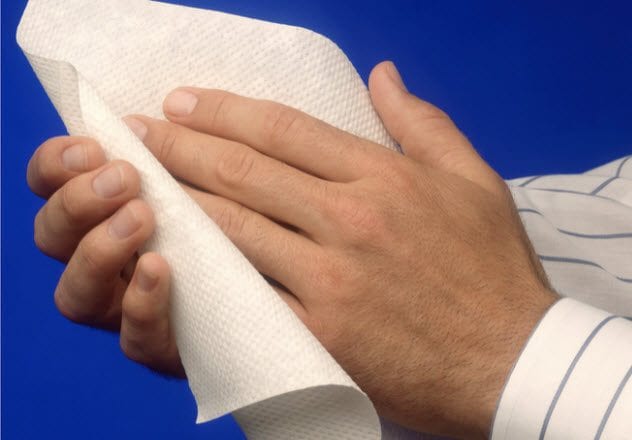
As we said earlier, Scott Paper Company capitalized on the demand for improved hygiene by essentially “inventing” the market for toilet paper. Nearly a decade later, a manufacturing error at Scott’s mills revolutionized the company by producing tissue that was too thick to use as toilet paper.
Remembering a story about a schoolteacher who cut up copy paper for her students to use as hand wipes (as opposed to a communal cloth that spread germs), company founder Arthur Scott set his sights on marketing the world’s first disposable paper towel.
By perforating the thick, unusable paper so that it could be dispensed in individual sheets, Scott targeted his sales to railroad stations, hotels, business and industrial buildings, and schools under the name “Sani-Towels.” By 1931, a paper manufacturer’s mistake had become a successful household item throughout America.
2 Revelations
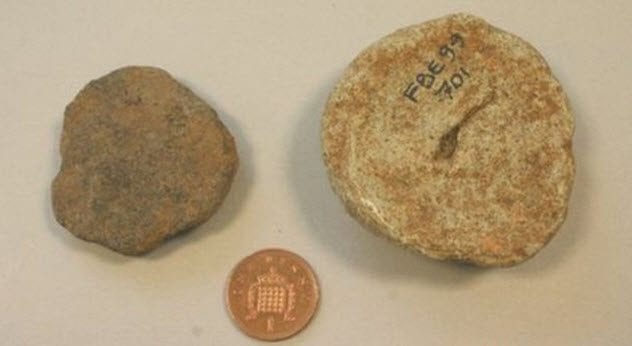
In 2013, ancient Roman artifacts displayed since the 1960s at the Fishbourne Roman Palace in England were discovered to have been used as a form of toilet paper according to the British Medical Journal.
The ceramic disks, which were originally categorized by the museum as “gaming pieces,” were found to contain partially mineralized excrement. According to French anthropologist Philippe Charlier, similar pieces were often found near latrines. He went on to cite an ancient Greek proverb which said, “Three stones are enough to wipe one’s arse.”
In addition, Charlier found an image on an ancient Greek cup that showed stones being used to cleanse one’s rear. According to museum curator Dr. Rob Symmons, Fishbourne is considering recataloging the objects following further chemical analysis.
1 Kimberly-Clark
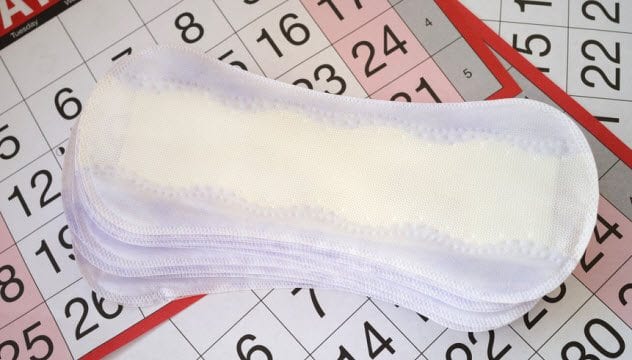
One of the world’s leading distributors of brand name toilet paper, Kimberly-Clark had its beginnings rooted in a time filled with despair and uncertainty. Founded in 1872, the company produced its first product of newsprint made from cotton rags and linen.
As the company expanded over the years, so did the groundbreaking innovations that changed the face of hygiene in the battlefields. In 1914, Kimberly-Clark researchers produced the world’s first cellulose wadding (aka tissue) using a by-product of processed sugar cane.
Taking the place of surgical cotton that was scarce during World War I, “cellucotton” was used to treat the wounds of thousands in the trenches. It was then that nurses discovered other uses for cellucotton for their own feminine hygiene.
However, it would be another six years before the company recognized the commercial potential, introducing the world’s first “feminine” napkin in 1920. Kimberly-Clark went on to devote many of its resources to the war effort in the 1940s and initiated a growth program to handle revived consumer product demand following the end of World War II.
Adam is just a hubcap trying to hold on in the fast lane.


